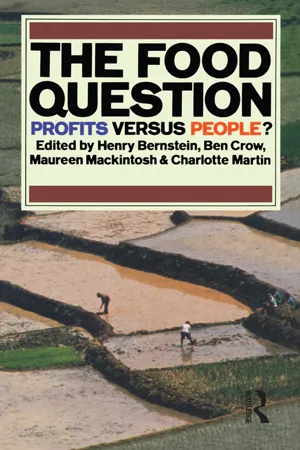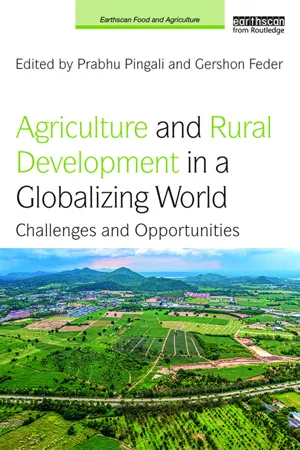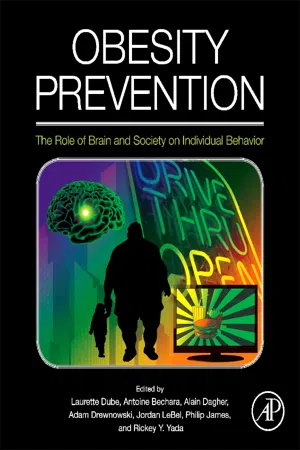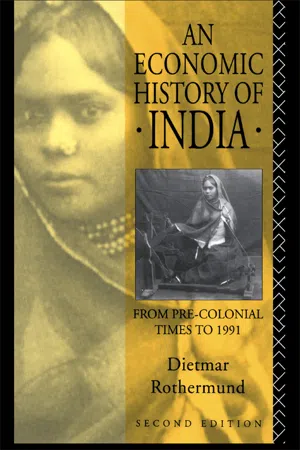Green Revolution
The Green Revolution refers to a period of significant agricultural innovation and technology adoption that took place in the mid-20th century. It involved the introduction of high-yielding crop varieties, increased use of fertilizers and pesticides, and modern irrigation techniques. The Green Revolution led to substantial increases in food production, helping to alleviate hunger and improve food security in many parts of the world.
8 Key excerpts on "Green Revolution"
- eBook - ePub
- Matthew N. O. Sadiku(Author)
- 2020(Publication Date)
- CRC Press(Publisher)
...Another revolution, known as the Green Revolution (GR), occurred and changed the agriculture sector. The GR refers to the transformation in agricultural practices in many parts of the developing nations (such as Mexico, India, Pakistan, Tanzania, Nigeria, Ghana, Malaysia, and the Philippines) that led to a significant increase in agriculture production between 1940 and the 1960s. It occurred during a period when the productivity of global agriculture increased drastically as a result of new advances. It is a combination of controlling chemicals in the soil and pest control and mechanization of agriculture. The revolution sought to replace subsistence agriculture with commercial agriculture. Figure 4.2 Four industrial revolutions. Source: https://www.visiativ-industry.ch/industrie-4-0/ This chapter provides an introduction to GR, its impacts, advantages, and disadvantages. It also covers the second GR that seeks to correct the limitations of the first GR. 4.2 Concept of Green Revolution The GR (or the Third Agricultural Revolution) refers to the development of technology transfer initiatives occurring between the 1930s and the late 1960s. The term “Green Revolution” was first used in March 1968 by the former US Agency for International Development (AID) director William S. Gaud. It was funded by the Rockefeller foundation, the Ford foundation, the World Bank, the US AID, aid agencies, and government agencies around the world. Some manufacturers in the United States discovered that it is possible to create a fertilizer from petroleum (the so-called petrochemical fertilizer) that can be used on crops. The GR spread technologies that already existed but had not been widely implemented outside industrialized nations [ 3 ]. It was championed by American agronomist Norman Borlaug, who received the Nobel Peace Prize in 1970 in recognition of his efforts. He was one of the leading researchers in an international crop improvement program. Dr...
- eBook - ePub
Animal, Vegetable, Junk
A History of Food, from Sustainable to Suicidal
- Mark Bittman(Author)
- 2021(Publication Date)
- Mariner Books(Publisher)
...It is not a violent Red Revolution like that of the Soviets, nor is it a White Revolution like that of the Shah of Iran. I call it the Green Revolution.” Was the Green Revolution a technological miracle, one that showed the way to end world hunger, to liberate poor farmers while increasing yields and promising all the riches and pleasures of the postwar USA? The real answer is not the one its adherents would like you to believe. The Green Revolution began in the forties (before it was named), when hybrid seed pioneer Henry Wallace, the Rockefeller Foundation, and the Mexican government founded the Mexican Agricultural Program. Joining the effort was the young American agronomist Norman Borlaug, who, while virtually ignoring what was traditionally grown, developed and brought in high-yielding hybrid seeds along with chemical fertilizers and pesticides, with the idea of producing cash crops to sell on the global market. If you look at one particular set of numbers resulting from this strategy, the Green Revolution indeed appears miraculous. Overall, food production in the developing world doubled—and sometimes more—from the early sixties to the late eighties, growing faster than the population itself. Mexico went from an importer of wheat to an exporter. Higher yields led to a nearly three hundred percent increase in rice production in Indonesia. Latin American corn production increased by a third. By the nineties, close to seventy-five percent of Asia’s rice and half of the wheat in Africa, Latin America, and Asia were grown using new hybrid varieties. The Green Revolution reportedly doubled food supply in Asia in just twenty-five years. That outpaced population growth significantly, and by 2000 world food supplies were twenty percent higher per capita than in 1961. The number of people going hungry decreased by sixteen percent between 1970 and 1990...
- eBook - ePub
The Food Question
Profits Versus People
- Henry Bernstein, Maureen Mackintosh, Charlotte Martin, Ben Crow, Ben Crow(Authors)
- 2014(Publication Date)
- Routledge(Publisher)
...7 Some Economic and Political Consequences of the Green Revolution in India Utsa Patnaik The inception of India’s “new agricultural strategy” from 1961 followed the visit of a team of experts from the Ford Foundation, whose report on “India’s Food Crisis” evidently greatly influenced government policies. Under the new strategy the Intensive Agricultural Development Programme (IADP) was started in fifteen districts selected for the availability of irrigation and absence of acute tenurial problems. High-yielding cereal seed varieties already developed in Mexico and Taiwan, along with fertilizers, pesticides and credit to farmers, were made available at subsidized rates. The high-yielding varieties programme was subsequently extended to all 324 districts in the country. Government policy documents of that time bear the stamp of ideas about “modernizing” agriculture such as those of T.W. Schultz. 1 Policy documents stressed the need to “transform traditional agriculture” by introducing an entirely new, imported technology package, while the need to reform land-holding structure and tenurial relations receded to the background. Two phases of the Green Revolution: the uneven expansion of output The first phase of the Green Revolution from the early 1960s to the mid 1970s was primarily concentrated on wheat and was associated with a substantial rise in both yield per unit area and total output, especially in North India. In this phase foodgrains prices were rising faster than prices of either manufactured inputs into agricultural production, or final consumption goods. Thus, it took less wheat output, for example, to buy fertilizers or fuels in 1974 than it had before the start of the Green Revolution in 1963. The barter terms of trade moved sharply in favour of the agricultural sector. At the same time, real earnings of rural labour were declining...
- eBook - ePub
- Marc Frey, Ronald W. Pruessen, Tai Yong Tan, Tan Tai Yong(Authors)
- 2015(Publication Date)
- Routledge(Publisher)
...The Green Revolution was understood and criticized then, and is so today, not as simply an agricultural innovation, but as an economic, political, environmental, and moral transformation, as Modernization itself. This is why the seeds were imagined to have the power to end poverty and war, 53 and why the introduction of improved rice and wheat varieties is an unnoticed occurrence in the history of North America and Europe (although, of course, they grow there, too) but is recorded as a seminal event in the history of Asia. 54 This is also why critics, from Al Gore to Prince Charles, remember the Green Revolution as the moment when Asians forsook their traditional, sacred bond to the earth. 55 The modernizers’ prophecies came to pass in 1966. On January 20, speaking in Independence, Missouri, President Lyndon B. Johnson announced that “the position of the United States is clear. We will give our help and support to nations which make their own decisions to insure an effective balance between the number of their people and the food they have to eat.” 56 The short-tether policy, as it came to be called, treated each country as a human ecosystem, with each government responsible for maintaining a supposedly natural balance between food and population. Johnson responded to the Bihar famine by dispatching 5.1 million tons of wheat, one-fifth of the American crop, to Calcutta. 57 He imposed short-tether policies to compel New Delhi to adopt self-help measures—including dwarf seeds—that it had in fact already been adopted, thereby alienating the Gandhi government and allowing future generations of critics to claim that the Green Revolution had been forced on India by Washington and the World Bank. 58 On October 25, amid the furor over IR-8, Johnson stood next to Marcos in an experimental IRRI rice field in Los Baños, Philippines, and praised the inventors of miracle rice...
- eBook - ePub
The Agricultural Dilemma
How Not to Feed the World
- Glenn Davis Stone(Author)
- 2022(Publication Date)
- Routledge(Publisher)
...The Green Revolution was the result of “a spectacular breakthrough in wheat, rice and maize production” that would jump yields from 700 to 5,000 kg/ha and destroy peasant conservatism in one stroke. The Green Revolution, he explained, was already spreading beyond Asia to Africa, generating “new hope for a better life among hundreds of millions of rural people” and injecting “a new rhythm of business activity into formerly stagnant economies.” The US press found the story irresistible, and that summer a New York Times editorial gushed about the “miracle seeds” behind a “revolution in world agriculture that has begun to produce record crops in a growing number of desperately hungry lands” including the Philippines (suddenly self-sufficient in rice!), Iran (now a wheat exporter!), and Ceylon (record rice harvest!) (New York Times 1968b). All of Borlaug’s claims about Africa and yield increases were whoppers, as was almost everything in the Times article. In the Philippines some dwarf seeds had been planted but the country’s gap between production and consumption had not changed and President Marcos’s announcement of rice self-sufficiency was fraudulent – he was exporting token quantities with great fanfare while secretly importing larger quantities from Hong Kong (Cullather 2010, 170–171). And neither Iran nor Ceylon (Sri Lanka) had planted any dwarf grains at all. Communist China was not mentioned, but it too had bumper harvests in 1968 – indeed one of its best growing seasons ever (McLaughlin 1968) – with no Green Revolution seeds of any kind. But Mexican seeds were steadily adopted in India’s wheat-growing areas during the 1970s as subsidized fertilizer continued to flow and private tube wells were drilled. Many farmers switched back from Mexican wheats to local varieties because of input shortages and better prices for the local wheat and straw (Baranski 2022), but as the local seeds were increasingly displaced this became impossible...
- eBook - ePub
Agriculture and Rural Development in a Globalizing World
Challenges and Opportunities
- Prabhu Pingali, Gershon Feder, Prabhu Pingali, Gershon Feder(Authors)
- 2017(Publication Date)
- Routledge(Publisher)
...There is also an increasing awareness of the detrimental impacts of climate change on food security, especially for tropical agriculture systems in low-income countries (Byerlee, de Janvry, and Sadoulet 2009). These countries continue to be plagued by the age-old constraints to enhancing productivity growth, such as the lack of technology, poor market infrastructure, insufficient institutions, and absence of an enabling policy environment (Binswanger and McCalla 2010). In sub-Saharan Africa, the demand for intensification, and hence the need for land productivity-enhancing Green Revolution technology, was low in the 1960s (Pingali 2012). Also, in the decades of the 1960s and 1970s, agricultural research was not focused on crops important to African smallholders, such as sorghum, millet, cassava, and tropical maize (Evenson and Gollin 2003). In the last decade there has been a significant rise in the introduction and adoption of improved varieties of these crops (Walker and Alwang 2015). At the same time in Asia, lower potential rice lands are witnessing the rapid spread of improved drought- and flood-tolerant varieties (Pandey, Velasco, and Yamano 2015). In the emerging economies, growing private sector interest in investing in the agricultural sector has created an agricultural renaissance (Pingali 2010). Supermarkets are spreading rapidly across urban areas in emerging economies and are encouraging national and multinational agribusiness investments along the fresh produce value chains in these countries (Reardon and Minten 2011). Consequently, staple crop monoculture systems, popularized by the Green Revolution, are diversifying into high-value horticulture and livestock production...
- eBook - ePub
Obesity Prevention
The Role of Brain and Society on Individual Behavior
- Laurette Dube, Antoine Bechara, Alain Dagher, Adam Drewnowski, Jordan LeBel, Philip James, Rickey Y. Yada, Laurette Dube, Antoine Bechara, Alain Dagher, Adam Drewnowski, Jordan LeBel, Philip James, Rickey Y. Yada(Authors)
- 2010(Publication Date)
- Academic Press(Publisher)
...In other words, Green Revolution 2.5 charts agricultural, social and economic development pathways that better balance the transition from tradition to modernity. It identifies what works best in both tradition and modernity, and revisits some of the basic ways in which each operates to improve worldwide food and nutrition security for the health of all, and the competitiveness of developing and developed nations. Green Revolution 2.5 will strive to chart development trajectories in the poorest countries of the world to promote healthy and sustainable development; to reduce hunger, nutritional deficiencies and poverty in its early stage; to control social and health inequities; to improve rural livelihoods while creating health-friendly cities; to ensure safety in local and global food systems; and to facilitate environmentally, socially and economically sustainable development. Such trajectories will enable the poorest countries to progressively reap the many benefits of development without having to pay the high toll of obesity and chronic diseases. Aligned with this vision, pathways at the early stage of development achieve maximal societal and economic value, and contribute to solve food security issues, while laying the foundations of local societies and economies that learn to interact with global societies and economies in a balanced and safe manner. Even the most innovative approaches to address health challenges within the local and global food systems have had limited success, with the agenda of “food security” focusing exclusively on the reduction of hunger and nutritional deficiencies. Healthy eating, food security and food safety have typically been the object of different interventions, different systems and different institutions. Yet the ever-increasing interconnections between local and global agriculture, food, and financial systems potentially both underlie the causes and point to solutions to the three food crises...
- eBook - ePub
- Dietmar Rothermund(Author)
- 2002(Publication Date)
- Routledge(Publisher)
...Since at that time the elections for the Lok Sabha (central parliament) and the legislative assemblies of the federal states were still held jointly, a great deal of local discontent queered the pitch of national politics. The strength of the Congress in the Lok Sabha was greatly reduced and in most parts of Northern India heterogeneous coalitions displaced the Congress governments. Central economic planning seemed to have no future under such conditions and the propensity to invest also declined, both in the public and in the private sector. Only the rich peasants were bound to be optimistic, as they benefited from the steep rise of agricultural prices. They could now invest in various inputs in order to step up their production. Thus the ‘Green Revolution’ blazed a new trail in the Indian countryside. 11.2 THE ACHIEVEMENTS AND DRAWBACKS OF THE ‘Green Revolution’ The recovery of Indian agricultural production after the great drought was only partly due to the ‘Green Revolution’. In order to arrive at an accurate estimate of the impact of the ‘Green Revolution’, we have to consider the irregular sequences of good and bad harvests under the influence of the monsoon. Two good harvests had immediately preceded the two years of the great drought, and it was followed by good harvests once more. For a balanced assessment, we shall take into consideration the quinquennial average of 1961–5 and 1966–70. In this way we include the first year of the drought in the first set and the second one in the second set, so as to establish more or less equal series of good and bad harvests. The result is reflected in the following figures (in million tons): rice 35 and 38 wheat 11 and 18, jowar 9 and 9, bajra 4 and 5, maize 5 and 6, pulses 11 and 11, oilseeds 8 and 8. The only remarkable difference can be noticed in the case of wheat (a 60 per cent increase), whereas rice production increased by only 8 per cent. The millets (jowar and bajra) as well as pulses and oilseeds stagnated...







